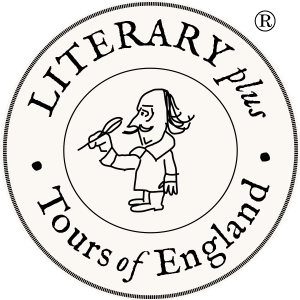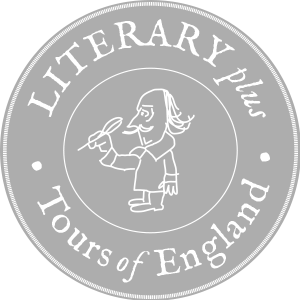
Brontë Parsonage
Charlotte, Emily and Anne Brontë
Dove Cottage
William Wordsworth
Hill Top
Beatrix Potter
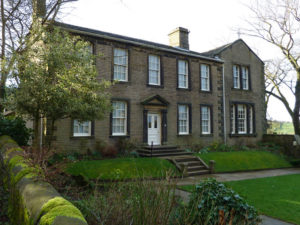
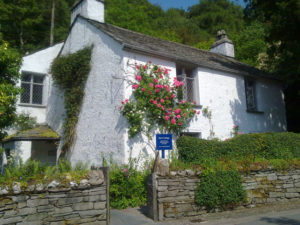
Dove Cottage
William Wordsworth
The tours begin and end at Manchester airport (MAN).
The details below describe the tour highlights. Supplementary sites and stopping points will be included wherever feasible. All tours can be customized. So, once you’ve made a selection, we’ll contact you to review and refine the itinerary to reflect your personal preferences.
The guide prices shown below relate to escorted tours and assume double room occupancy in luxurious 4- or 5-star city center hotels. The actual price of your tour will depend on the make-up of your tour party, your accommodation preference, special needs, seasonal variations, availability and currency exchange rates. You will be provided with a firm quote before you book.
Guide price $4,650 per person (escorted / based on 2 people)
Haworth
This small Yorkshire town was the home of the Brontë sisters for almost all of their short lives. It was here that they wrote some of the most remarkable – and passionate – works of English literature: Charlotte (1816-55) Jane Eyre, Emily (1818-48) Wuthering Heights, Anne (1820-49) The Tenant of Wildfell Hall. All three were also gifted poets, a fact that is overlooked too easily on account of the enduring popularity of their novels. The Brontë family’s house – “humble and unattractive” according to Charlotte – has been lovingly preserved as the Brontë Parsonage Museum, truly a jewel of English literary history. Everything in the house is authentic (except for the clothes, which are faithful reproductions) and the surrounding desolate moorland is where the sisters took their legendary walks. The BBC movie To Walk Invisible (2016) – much of it filmed in and around Haworth – brilliantly depicts how Charlotte, Emily and Anne overcame hardship and were inspired to write.
Lake District
This World Heritage Site, famous for its panorama of lakes and mountains, was home to William Wordsworth for much of his life. In 1799 he moved into Dove Cottage, on the edge of Grasmere: “the loveliest spot that man hath ever found”. William lived here for eight years with his sister Dorothy and, from 1802, his new wife Mary. It was in the upstairs sitting room that Wordsworth wrote some of his best-loved poems, including I Wandered Lonely as a Cloud (Daffodils). The Wordsworths left Dove Cottage in 1808 because it had become too small for their growing family and in 1813 they moved into Rydal Mount in the lovely small town of Ambleside, where Wordsworth lived for the rest of his life. He died in 1850, age 80.
Beatrix Potter first visited the Lake District in 1882, when she was 16, and immediately fell in love with it. Following the success of her first three children’s books, including The Tale of Peter Rabbit (1901), she was able to buy the 17th Century house Hill Top, which became her home from 1905. Potter lived and worked there for the next eight years, during which time she wrote many more books. The nearby Beatrix Potter Gallery presents many of her original illustrations. Potter also had a passion for land conservation and became one of the National Trust’s most prominent early benefactors, bequeathing her 4,000 acres of land and fifteen farms to the charity. The 2006 feature film Miss Potter, starring Renée Zellweger and Ewan McGregor, portrays her early struggles and her love of the Lake District.
York
13th Century York Minster
Lake District
World Heritage Site
Whitby
Bram Stoker’s Dracula
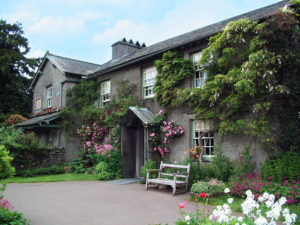
Hill Top
Beatrix Potter

York
13th Century York Minster
Guide price $7,390 per person (escorted / based on 2 people)
In addition to all of the above …
Lake District
An all-day tour of this legendary landscape includes Wordsworth House, a lovely Georgian townhouse in the small market town of Cockermouth. William was born here in 1770 and lived here until 1782. Wordsworth’s love of literature evolved in his father’s library, where he studied the works of Shakespeare and Milton among others. The garden, with the River Derwent running behind it, was an early inspiration and the place where William and his sister Dorothy developed their appreciation of nature. The tour also includes Brantwood on Coniston Water, home for the last years of his life (from 1871 to 1900) of John Ruskin, one of the greatest Victorian critics and poets. The nearby Ruskin Museum celebrates the literary and cultural history of the Coniston area.
Knutsford
Elizabeth Gaskell spent her formative years in Knutsford and described it as her “dear, adopted native town”. She is commemorated by the Gaskell Memorial Tower in the town centre. Knutsford was the inspiration for Cranford in her novel of the same name, which was lovingly dramatized in the BBC’s 2007-10 mini-series starring Judi Dench and other leading actors. Her later home in nearby Manchester is a restored Regency villa, where she lived with her husband and four children from 1850 until her death in 1865. She wrote North and South (1855) here, expressing her concern for the plight of the poor in this booming industrial city. Gaskell is also known for her affectionate biography of Charlotte Brontë, a frequent visitor between 1851 and 1854, who described the house as a “cheerful, airy house, quite out of Manchester smoke”.
A short distance from Knutsford is Daresbury, the birthplace of Charles Lutwidge Dodgson, better known as Lewis Carroll, the creator of Alice’s Adventures in Wonderland and Through the Looking Glass. The Lewis Carroll Centre, attached to the village’s All Saint’s Church, celebrates his multi-faceted life. There’s a beautiful memorial window in the church itself, depicting characters and scenes from the Alice books. A short distance away is the site of the village parsonage in which Carroll was born in 1832. The building was destroyed by fire over a hundred years ago: all that remains is a ground level brick outline indicating where it once stood.

Lake District
World Heritage Site

Whitby
Bram Stoker’s Dracula
Guide price $10,150 per person (escorted / based on 2 people)
In addition to all of the above …
Yorkshire
A leisurely drive through the heart of the gorgeous Yorkshire Dales includes a visit to the ruins of Fountains Abbey, another World Heritage Site. Before the Dissolution of the Monasteries in the mid-16th Century, Fountains Abbey was one of the largest and richest Cistercian abbeys in Britain and is one of only a few that survives from the 12th Century.
The historic walled city of York was founded by the Romans and at one time ruled by the Vikings. It offers the visitor many rich experiences, including the huge 13th Century Gothic cathedral (known as York Minster). The Great East Window, finished in 1408, contains the largest expanse of medieval stained glass in the world.
The North York Moors is a marvelous area of moorland intersected by deep valleys populated with farms and dense woodland. The lovely fishing port of Whitby, bordered by the Moors and the spectacular North Sea coast, will forever be associated with the classic horror novel Dracula and its author Bram Stoker (1847-1912). He would sit on the West Cliff looking across the busy port below him to Whitby Abbey on the East Cliff, which he described in his novel as “a most noble ruin, of immense size, and full of beautiful and romantic bits”. Whitby was also the home port of the great explorer Captain James Cook and it drew many literary visitors, including Elizabeth Gaskell and Lewis Carroll.
The award-winning North Yorkshire Moors Railway runs between Whitby and Pickering, traversing more than twenty miles of magnificent moorland scenery. Its steam locomotives, vintage rolling stock and well-kept stations have been used in many movies and TV shows, including the Harry Potter films (2001-11).
